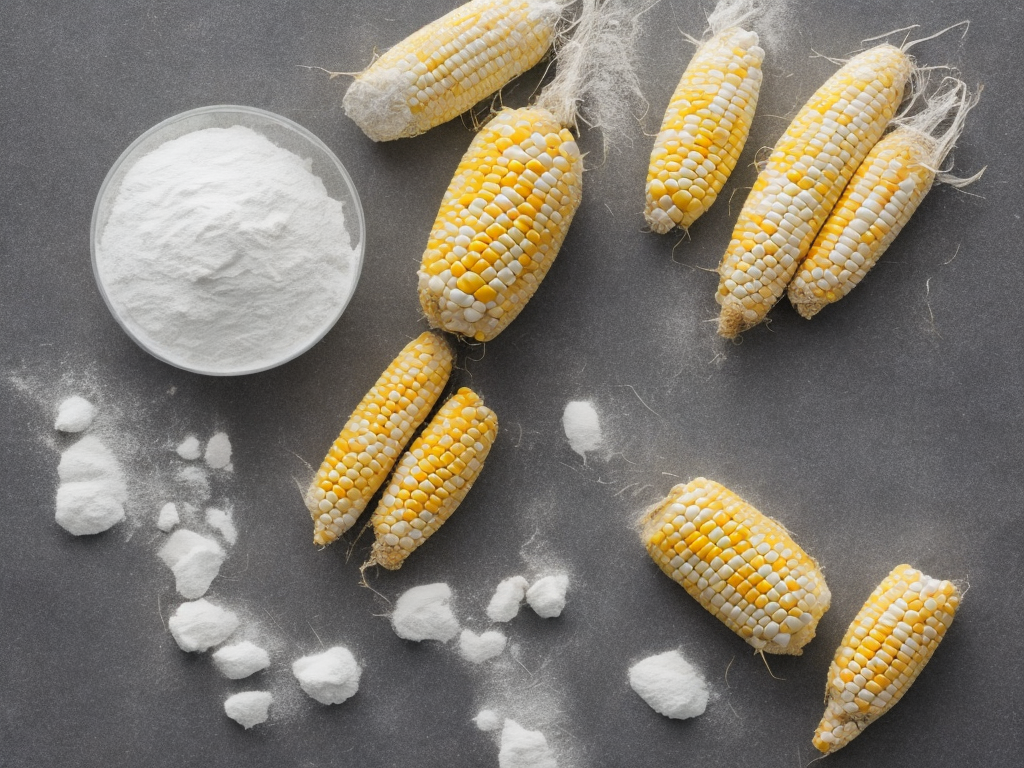
If you're not entirely familiar with the different types of corn-based ingredients used in cooking and baking, it can be easy to get confused between cornstarch and corn flour. Both are made from corn, but their properties and uses are different. This article aims to explain the difference between the two.
Cornstarch:
Cornstarch is derived from the endosperm of corn kernels and is a very fine, powdery white starch. It is similar in consistency to flour, but it has a much finer texture. Cornstarch is used primarily as a thickening agent in cooking and baking.
When mixed with water or other liquids, cornstarch forms a paste that thickens and stabilizes sauces, soups, gravies, puddings, and pies. Cornstarch does not impart any flavor or color to the dish and works well with acidic ingredients like lemon juice or vinegar. It is also often used as a coating for fried foods, as it creates a crisp, golden crust.
Another benefit of cornstarch is that it does not break down when boiled or cooked for a long time. This makes it ideal for thickening dishes that need to be cooked for a while – like stews, casseroles, and curries – as it can withstand high temperatures without breaking down.
Corn Flour:
Corn flour, on the other hand, is made from whole corn kernels. Corn flour is usually yellow or white and has a fine texture that is similar to wheat flour. It is used in various dishes worldwide, such as cornbread, tamales, and tortillas.
Corn flour is also used as a substitute for wheat flour in gluten-free cooking. It is an essential ingredient for making tortillas, which is a staple food in Mexico and Central America. Corn flour is also used to make arepas, a type of flatbread from South America.
While corn flour is excellent for baking and making bread, it is not a great thickening agent. Unlike cornstarch, corn flour will clump and not dissolve if added directly to a sauce or gravy. Corn flour is best mixed with water or broth to make a slurry before being added to the dish to thicken it.
Corn flour is more nutritious than cornstarch as it contains fiber, protein, and other essential vitamins and minerals. However, it is higher in calories compared to cornstarch.
Nutritional Differences:
Cornstarch and corn flour do have some nutritional differences.
Cornstarch is a staple in most kitchens, but it is high in calories and low in nutrients. One tablespoon of cornstarch contains approximately 30 calories, zero protein, zero fiber, and almost no vitamins or minerals.
On the other hand, corn flour is more nutritious than cornstarch. One tablespoon of corn flour contains approximately 25 calories, 0.5 grams of protein, 0.5 grams of fiber, and some amounts of vitamins and minerals like iron and vitamin C.
Cooking with Cornstarch and Corn Flour:
Cornstarch and corn flour are readily available in most grocery stores and are incredibly versatile.
Cornstarch is an excellent thickening agent that can be used in various dishes. Here are some tips for using cornstarch:
- Mix it with a little bit of cold water to avoid lumps.
- Add it to sauces, gravies, or soups towards the end of cooking.
- Do not use it in acidic dishes like tomato sauce, as it might break down and lose its thickening properties.
Corn flour, on the other hand, is perfect for making bread and baked goods. Here are some tips for using corn flour:
- Use it as a gluten-free alternative to wheat flour.
- Use it to make tortillas, tamales or cornbread.
- Mix it with liquid to make a slurry before adding it to sauces or gravies as a thickener.
In Conclusion:
In summary, cornstarch and corn flour may both come from corn, but they are distinct in their properties and intended culinary uses. Cornstarch is an excellent thickening agent that is ideal for sauces, gravies, and desserts, while corn flour is most commonly used in baked goods like bread, tortillas, and arepas. Both have their benefits and can be versatile ingredients in the kitchen when used correctly. So, next time you find a recipe that calls for cornstarch or corn flour, you'll know exactly which one to use!
 Self-Instruct
Self-Instruct